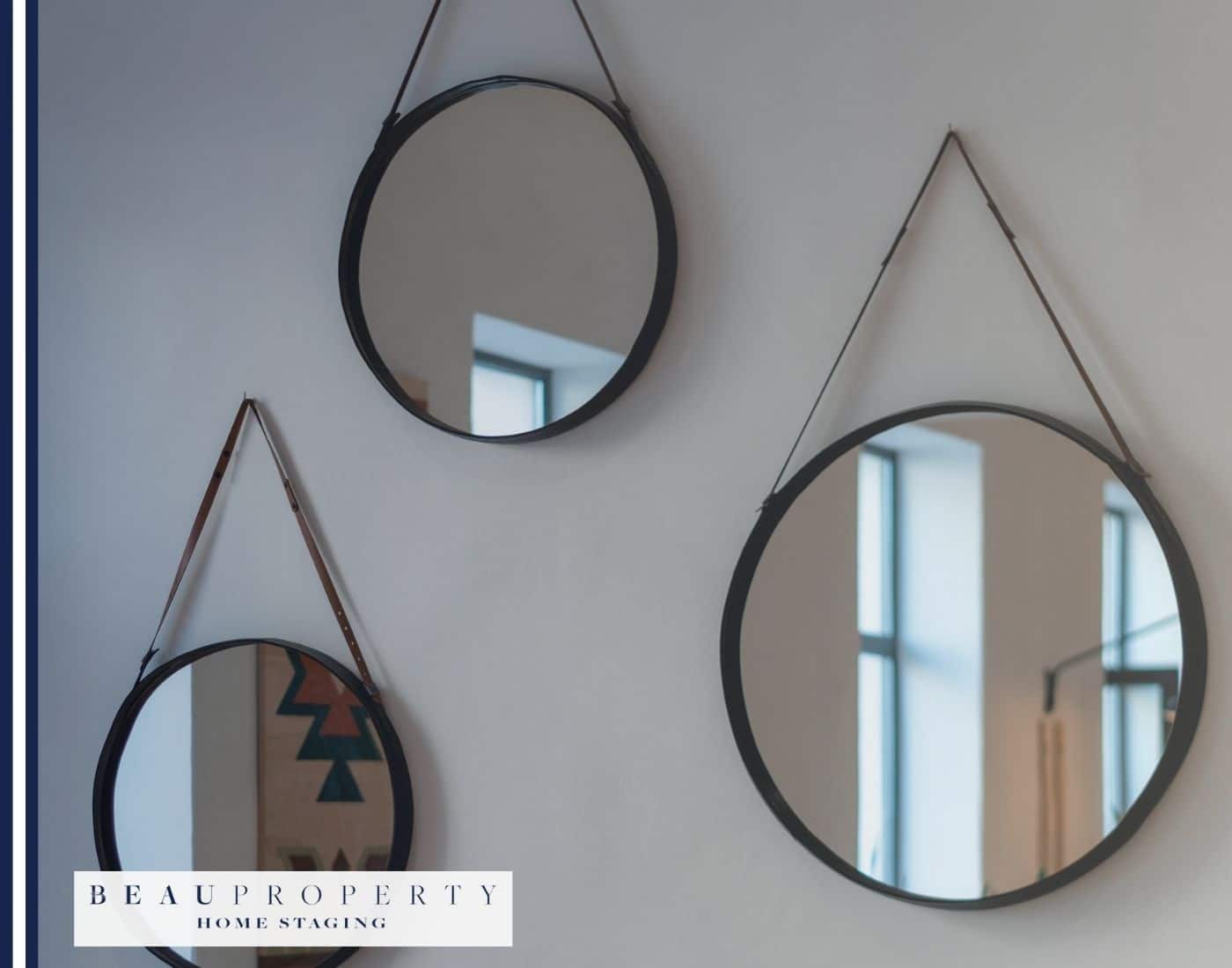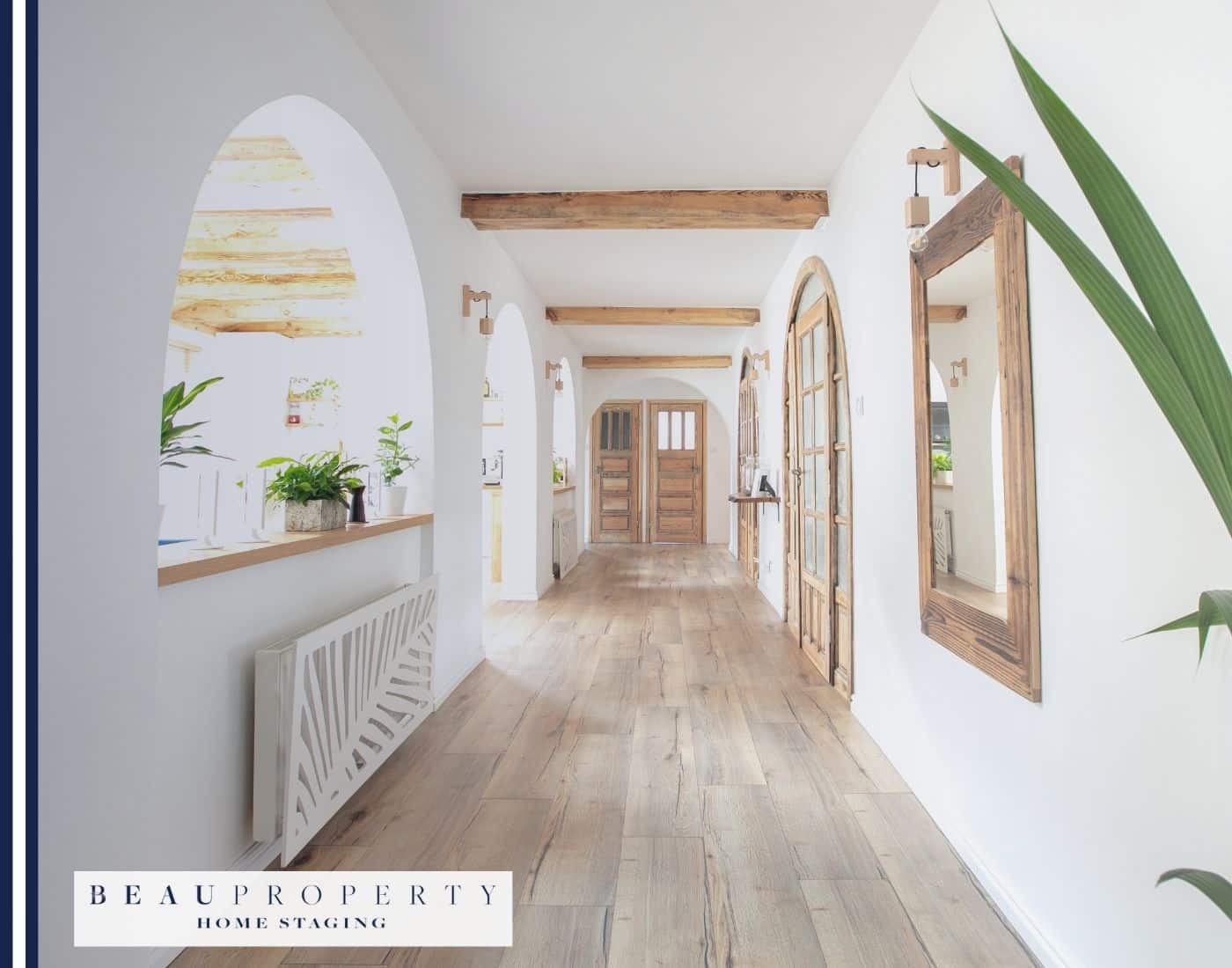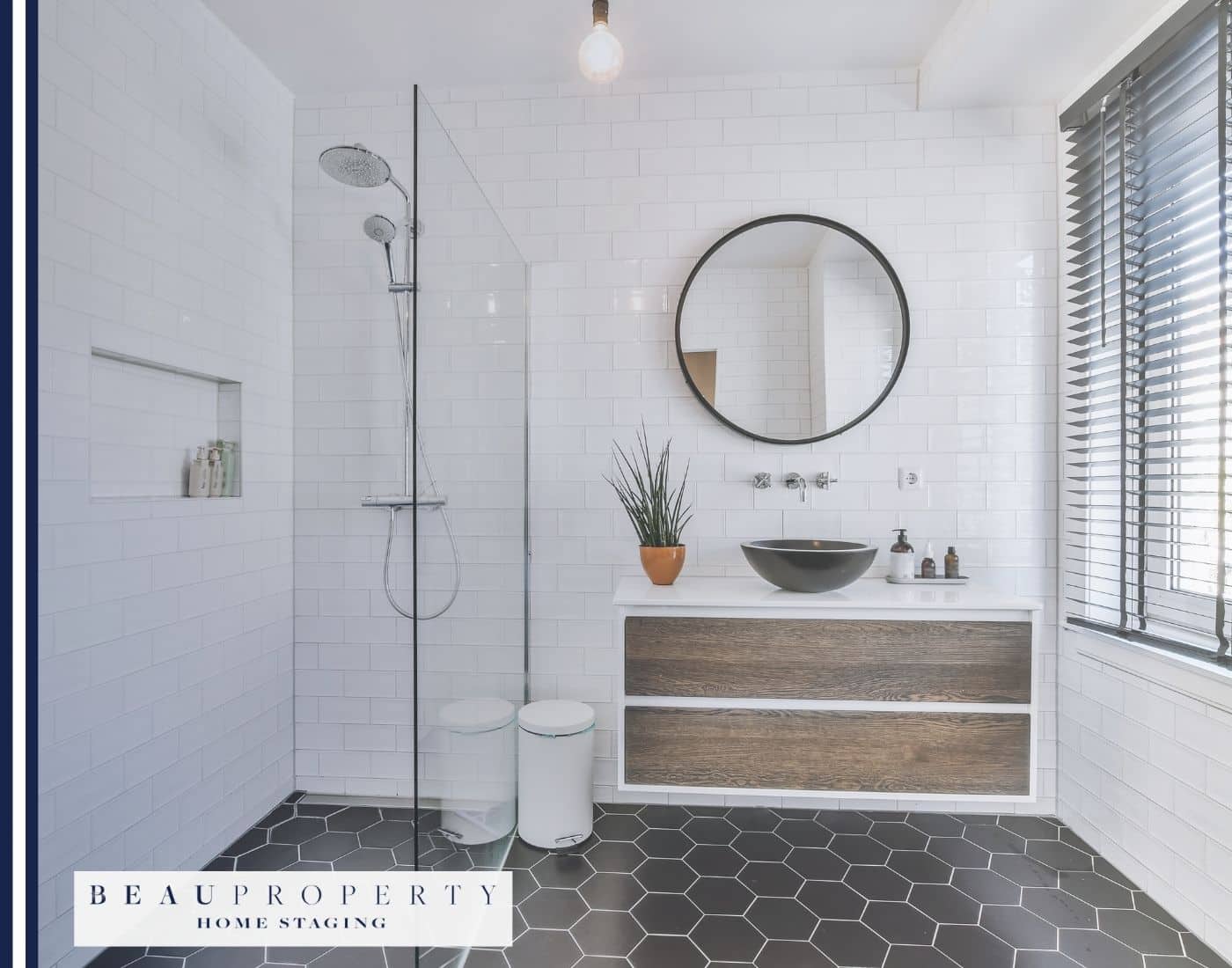Introduction: The Magic of Mirrors in Home Design
Mirrors hold a special place in home design, blending functionality with visual drama. Their main appeal lies in their transformative powers, mirrors can breathe new life into even the most modest spaces, bringing light, energy, and a polished finish.
One of the greatest strengths of mirrors is their ability to enhance light. By reflecting both natural and artificial illumination, mirrors brighten rooms and make them feel more open and inviting. Placing a mirror near a window can multiply the effects of sunlight, spreading warmth throughout a room and making it more vibrant. Even small or dim areas become more cheerful simply by capturing and redistributing existing light.
Beyond light, mirrors are celebrated for their role in expanding space. In compact rooms, a thoughtfully placed mirror can give the illusion of greater depth, instantly making the area feel larger. This optical trick is invaluable in city flats or older homes with limited square footage, helping every corner feel airy rather than cramped.
The decorative possibilities are just as significant. With seemingly endless shapes, sizes, and frame styles, mirrors can reinforce or even define a room’s aesthetic. Whether you favour clean-lined modernism or ornate traditional details, there is a mirror to complement any look.
Understanding Mirror Placement Fundamentals
The Role of Height and Eye-Level Positioning
Getting the height right is key to successful mirror placement. Mirrors tend to work best when their centre is at eye level. This allows people to see their reflection comfortably as they pass by or use the space. In living rooms and hallways, aim to hang mirrors so that the centre is roughly 140–150 cm from the floor. In bathrooms or dressing areas, consider the typical height of users to balance usability with aesthetics.
Proportion and Scale with Surrounding Furniture
It’s important to judge the mirror’s size and shape in relation to nearby furniture. A mirror that’s too small above a large sofa or console table can look lost and undermine the room’s design. Ideally, the mirror should be around two-thirds the width of the piece it sits above. This approach helps achieve balance and ensures the mirror feels purposeful rather than accidental. For grouped seating or twin beds, consider whether a single large mirror or a pair of smaller mirrors better supports harmony.
Principles for Effective Placement
Placing mirrors with care draws attention to key features and supports room functionality. Take the time to assess each wall and angle, ensuring mirrors don’t reflect clutter or awkward views. Avoid placing mirrors directly behind busy furniture or in shadowy corners where they can lose impact. Think about how the mirror will interact with lighting and the flow of the room. Following these basic guidelines helps make mirrors a thoughtful and attractive part of any design scheme, encouraging a sense of coherence and comfort throughout the home.
Maximising Natural Light with Strategic Mirror Placement
Harnessing Sunlight with Careful Placement
Mirrors are powerful allies for light in any room. To make the most of daylight, position mirrors either directly opposite or at an angle to your windows. This technique helps bounce natural light back into the room, brightening even dim spaces. Observe the sunlight patterns throughout the day when selecting the spot. Placing a mirror where it will capture the sun’s rays for the longest will give you maximum benefit without harsh glare.
Angling Mirrors for Optimal Light Distribution
Angling a mirror thoughtfully can guide sunlight into areas that usually remain in shadow. For example, a mirror tilted slightly upwards can send natural light into the upper corners of a room, reducing dark patches. If you find a corner remains gloomy, try shifting or angling your mirror bit by bit. Small adjustments can make a noticeable difference, softly illuminating somber spots and creating a more even, uplifted atmosphere.
Enhancing Lighting Beyond Daylight
Mirrors do more than amplify daylight; they complement your room’s artificial lighting as well. Placing mirrors near lamps or light fixtures can magnify their glow, making spaces feel warmer and more inviting after sunset. For a cohesive effect, avoid reflecting exposed bulbs directly, as this may cause glare or discomfort. Instead, let mirrors reflect the softer aspects of lighting, such as the warm ambiance from lamp shades or wall sconces.
Creating the Illusion of Space in Smaller Rooms
Making Small Spaces Feel Larger with Mirrors
Mirrors are a powerful tool for opening up confined rooms. In a small space, a large mirror is more effective than several small ones for creating the illusion of extra room. Place a single, sizeable mirror centrally on a wall to reflect the full width of the room. This helps double the visible area, making the room feel airier and more open.
Using Full-Length and Wall-to-Wall Mirrors
Installing a full-length or wall-to-wall mirror can add striking visual depth. These mirrors stretch the room’s boundaries and reflect light and furniture, creating an illusion of a broader space. Leaning a tall mirror in a corner or against a wall is also effective, especially in bedrooms or hallways, as it contributes to a sense of height and openness.
For best results, position a large mirror opposite or adjacent to a window. This not only bounces daylight deeper into the room but can also visually pull in garden or outdoor views, amplifying the feeling of space.
Strategic Positioning to Extend Sight Lines
Angles matter. Position mirrors at an angle where they can capture both side walls; this multiplies sight lines and helps stretch narrow spaces. Placing a mirror behind furniture, like a sofa or a chest, works particularly well, making the wall seem to recede and adding dimension.
Mirrors as Focal Points and Statement Pieces
Making a Statement with Mirrors
Mirrors are powerful tools for anchoring a room’s design. When used as a decorative focal point, a mirror can draw attention, reflect beauty, and set the tone for the entire space. To maximise impact, choose a statement mirror and place it in a prominent position, above a fireplace, dining sideboard, or console table. This acts as a centrepiece, naturally guiding the eye and shaping the room’s aesthetic.
Choosing Frames and Styles
Selecting the right frame and mirror style ties your statement piece into your overall interior scheme. Materials and finishes should complement the room:
- Wooden frames add warmth and a classic feel.
- Metallic finishes, like gold or silver, offer modern or luxurious touches.
- Frameless mirrors suit minimalist or contemporary spaces.
Consider the shape, too. Oval or round mirrors soften harder lines and create a calming atmosphere, while geometric shapes or sunbursts bring visual playfulness or drama.
Creating Visual Interest
Unique mirror arrangements add depth and creativity. Try grouping several mirrors with different frames for a layered, gallery effect, or select an oversized mirror to command attention on a blank wall. Placing a mirror opposite artwork or an attractive view doubles visual appeal, enriching both light and composition.
A well-chosen mirror can be art in itself, reflecting your taste and transforming the feel of your environment. To keep focus on your desired features, always ensure that your statement mirror reflects beautiful or meaningful elements, not clutter or distractions.
The Art of Mirror Grouping and Gallery Arrangements
Creative Display Techniques
Arranging collections of smaller mirrors can transform an ordinary wall into a captivating focal point. The magic lies in variety, embrace a blend of shapes, sizes, and frames to create a visually rich display. Think of selecting mirrors as casting characters for a story: each one brings a unique presence that contributes to the overall composition. Circular, rectangular, and geometric mirrors combined on one wall invite the eye to explore, ensuring the arrangement feels lively rather than static. This diversity introduces depth and character, making even a blank wall burst with personality.
Achieving Visual Balance
Before you start mounting mirrors, lay them out on the floor. Experiment with arrangements, varying the spacing and orientation of each piece until you discover a balanced visual rhythm. Consider mixing vertical and horizontal lines or playing with unexpected patterns, mirrors don’t have to conform to a rigid grid. Asymmetry often works well, bringing a curated, intentional feel to the grouping.
When mixing frames, look for connecting elements such as a shared colour palette or complementary materials. This harmonious approach ensures that even an eclectic mix appears cohesive. Reclaimed or thrifted mirrors add charm and individuality, especially when given a touch of DIY, ike a fresh lick of paint or a new frame.
Mixing Sizes, Shapes, and Frames
For maximum impact, combine large statement mirrors with smaller accent pieces. Pairing ornate frames with minimalist ones or mixing metals and woods adds intrigue without visual clutter. Let each mirror “play its part” in the ensemble, ensuring no two are exactly alike but all contribute to a unified look. This playful process infuses your gallery with movement, drawing in the gaze and reflecting light from multiple angles.
Mirror Placement for Specific Rooms
Living Rooms
When choosing a spot for a mirror in the living room, aim for both style and practicality. A mirror positioned opposite a window will amplify natural light, giving your space a brighter and more open feel. Hanging a mirror near or above a mantelpiece, sofa, or console table helps create a focal point and draw attention to architectural features. Always avoid placing mirrors where they reflect clutter or mundane views, as this can detract from the desired effect. For the best impact, ensure the mirror is at eye level, so it naturally frames what you want to highlight in the room.
Bedrooms
Mirrors in bedrooms serve both decorative and functional purposes. Placing a large mirror above a dresser or adjacent to a wardrobe helps with dressing while also adding visual depth to the room. Consider the shape and scale of the mirror, rectangular mirrors work well for classic looks, while round mirrors add softness and intrigue. For added utility, mirrored closet doors or a full-length mirror behind or beside a door can provide ample head-to-toe reflection without taking up much wall space. Position mirrors so they reflect pleasant views, not laundry baskets or unused corners.
Hallways
Hallways often benefit from mirrors as they can make these transitional spaces feel larger and brighter. In long, narrow hallways, place a mirror at the far end to visually widen the area. For short, wide hallways, a mirror on a side wall will help create depth. Always consider the proportions of your hallway and hang the mirror at a comfortable height, typically at eye level. Avoid mirrors facing each other directly, as this can create a disorienting effect.
Bathrooms and Dressing Areas
Bathrooms require careful mirror placement for daily routines. Mount the mirror 4–6 inches above the sink or vanity for easy cleaning, and ensure the centre suits users’ eye level, particularly in shared bathrooms. In a dressing area, a mirror should be positioned to give a full view when standing, usually with the centre 6–8 inches above the dresser or facing north or east for optimal light, depending on tradition.
Common Mirror Placement Mistakes to Avoid
Height, Proportion, and Positioning Pitfalls
One of the most frequent errors made with mirrors is hanging them at an unsuitable height. Mirrors that sit too high or too low lose their reflective benefit and can disrupt the visual balance of a room. Always aim for the centre of the mirror to be at eye level for most users, creating a natural and inviting effect. Scale is another essential consideration, if a mirror is significantly wider or taller than the furniture beneath it, the space can feel awkward or unbalanced. When selecting mirrors for areas with tall ceilings, it’s important not to force alignment with adjacent architectural features like drapery or vents at the expense of effective mirror height and scale.
Reflecting Clutter and Unsightly Views
A mirror’s reflection can double the appearance of an object or a scene. Placing mirrors without careful thought often leads to them reflecting clutter, mess, or less attractive corners of a room. This might include unorganised desks, television screens, or storage spaces. Instead, position mirrors so they reflect something appealing, like artwork, a window, or a decorative feature. Doing so enhances a room’s beauty and adds depth without replicating chaos.
Locations to Use Caution or Avoid
Certain spots are commonly cautioned against for mirror placement. Mirrors directly opposite front doors can be divisive; in some traditions, such as feng shui, this may bounce energy back out of the home and feel unsettling to newcomers. In bedrooms, mirrors that face the bed are also debated, particularly in feng shui, as they may disrupt sleep or create a sense of unrest. If such a reflection is unavoidable, consider angling the mirror or draping it when not in use to minimise its impact.
Mirrors and Interior Design Styles
Matching Mirrors to Your Decor
Mirrors are more than just reflective surfaces; they are design elements that enhance a room’s style. Selecting the right mirror depends on the overall theme of your space. For modern interiors, choose mirrors with clean lines, frameless edges, or sleek metal frames. These maintain an uncluttered and contemporary look. For traditional spaces, opt for ornate frames, classic shapes, or mirrors with a distressed finish. These details add warmth and timeless appeal.
Enhancing with Frames and Shapes
The frame of a mirror can either blend with or stand out from your walls and furniture. Matching a mirror’s frame to other elements, like wood tones or metal finishes, can create harmony. For example, a gold frame can echo brass lighting fixtures. Alternatively, for bold contrast, select a frame in a striking colour or unusual material to make the mirror a statement piece.
The shape of the mirror also plays a role. Round and oval mirrors soften a room, while rectangles and squares provide structure. Unique shapes, such as arches or sunbursts, can become artful focal points.
Strengthening the Style Message
Use mirrors to reinforce the vibe you want. Grouped vintage mirrors add romance to shabby chic rooms. Geometric mirrors in black or chrome underline a minimalist or industrial style. In eclectic spaces, mixing different frames and shapes brings playful interest.
Careful mirror selection ensures that their presence feels intentional, not accidental. This thoughtfulness consolidates your design choices, making the space feel pulled together.
With the right approach, mirrors can quietly complement a scheme or take centre stage as a subtle showstopper. This conscious curation of style paves the way for expressing your personal taste throughout the home.
Conclusion: Reflecting Your Personal Style
Bringing It All Together
Mirrors are far more than functional surfaces, they are key tools in shaping how your home feels and looks. By following placement fundamentals, you can maximise both natural light and the illusion of space. Strategic use in smaller rooms, hallways, and living areas helps brighten darker corners and opens up confined spaces, making them feel more expansive and inviting. Thoughtfully chosen mirrors serve not just as decorative features but as focal points that anchor a design theme and draw attention in an understated way.
Style as Expression
Your choice of mirror, whether modern and frameless or ornate and vintage, communicates your unique sense of style. Think of mirrors as versatile accents: they can blend seamlessly with your décor for a harmonious look or stand out boldly as statement pieces. Experiment with frames, groupings, and placements until you find what resonates with your taste and lifestyle. For example, a gallery arrangement of assorted shapes can introduce an element of playful creativity, while a single full-length mirror can create simple elegance.
Guidelines With Flexibility
Remember, while guidelines around eye-level positioning, proportion, and what is reflected are important, there is always room for creative experimentation. Mirrors should not be placed where they reflect clutter or create dissonance, but the most successful interiors are those that mirror the homeowner’s personality as much as the light and space in the room.





